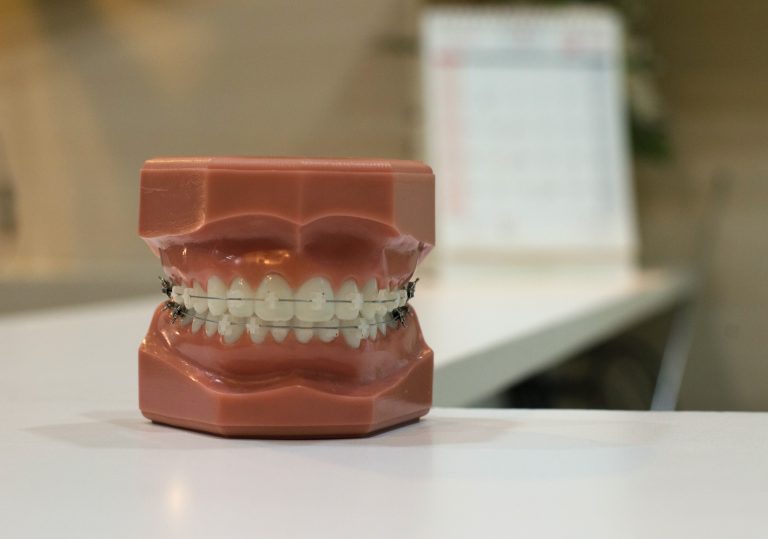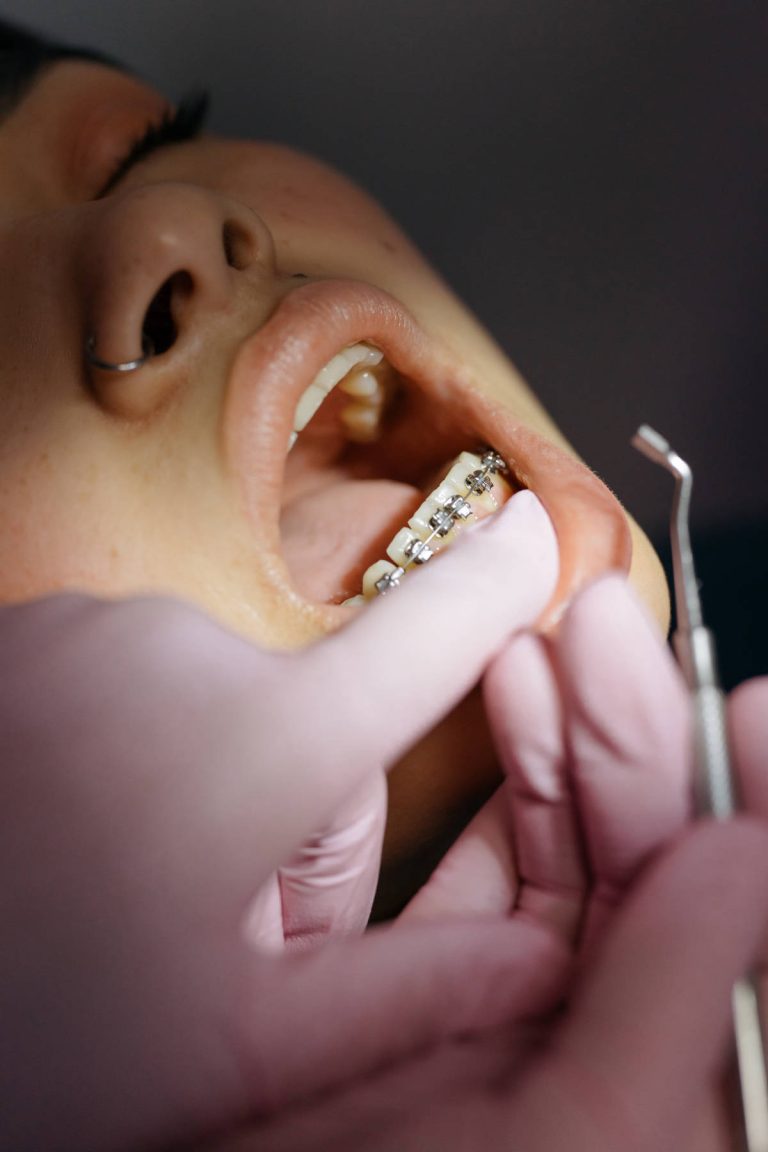Braces can start moving teeth as soon as they’re put on. This article explores the timeline of this process and provides insight.
Orthodontic treatment starts with brackets bonded to each tooth and connected by archwires. This applies gentle force to the teeth, encouraging movement. Treatment duration varies, from several months to a few years, depending on complexity.
Patients may feel discomfort or soreness as their teeth adjust. This is temporary and can be managed with pain relievers or orthodontic wax. Regular adjustments keep force consistent.
It’s important to follow the orthodontist’s instructions for oral hygiene and maintenance during treatment. Proper brushing, flossing, and dental check-ups help ensure success.
A study from the American Journal of Orthodontics and Dentofacial Orthopedics shows visible tooth movement can often be seen within the first few months of braces. This early progress shows orthodontic intervention successfully aligns teeth.

What are braces and how do they work?
Braces are a type of dental device that can fix misalignments, such as crowded teeth, gaps, and improper bites. They use brackets and archwires to apply pressure, which moves the teeth into position. As the treatment continues, wires may need to be tightened or replaced, and rubber bands may be used too.
At first, it may feel uncomfortable, but this usually passes in a few days. Regular visits to your orthodontist are essential for check-ups and adjustments. To make sure the braces work, it’s important to follow directions carefully. This includes brushing and flossing regularly, avoiding certain foods, and wearing any additional appliances provided.
Remember: Wearing braces takes patience and consistency. Follow your orthodontist’s instructions to get the best results.
Starting the orthodontic treatment
Starting orthodontic treatment can be an exciting and transformational experience. You may be wondering how soon your teeth will move with braces. Here’s a 4-step guide to help you understand what happens when starting treatment:
| Step | Description |
|---|---|
| 1 | Consultation: Your orthodontist will evaluate your dental condition through X-rays, photographs, and impressions. They’ll create a personalized treatment plan. |
| 2 | Braces Application: Brackets will be carefully attached to each tooth with adhesive. These act as anchors for archwire which guides teeth into alignment. |
| 3 | Adjustment Period: You may have discomfort or soreness as your teeth adjust. This is temporary and can be managed with OTC medications. |
| 4 | Regular Visits: Check-ups allow the orthodontist to monitor progress and make changes to ensure optimal results. |
Speed of teeth movement with braces varies depending on age, oral hygiene, and cooperation. Jordan saw improvements in his smile within a few weeks! With the right guidance, you too can look forward to achieving your desired smile.
How soon do teeth start moving with braces?
Braces and teeth movement go hand in hand. When can you expect to see results? Here’s a step-by-step guide:
- Week 1: After getting braces, your teeth may start to shift and become sore.
- Weeks 4-6: Your teeth will begin to align and spaces will start to close.
- Months 3-4: Focus is on correcting your bite to improve dental health.
- Month 6: Significant progress is visible and many teeth in desired positions.
- Months 12-24: Teeth are straightened and alignment is optimal.
Plus, regular visits to the orthodontist and good oral hygiene both help speed up the process.
Did you know that when you get braces, your teeth start to move right away? That’s according to the British Orthodontic Society (BOS). They say you can start to see changes within the first few weeks.
Monitoring progress and adjustments
Monitoring progress and making necessary tweaks is essential for proper braces care. Closely watch your teeth’s movement and make adjustments to ensure your orthodontic treatment progresses as planned. Here is a 4-step guide for tracking and adjusting:
| Step | Description |
|---|---|
| 1 | Regular Dental Check-ups: Schedule appointments with your orthodontist or dentist throughout your braces treatment. They will review your teeth’s movement and make changes, such as tightening wires or changing elastics. |
| 2 | X-Rays and Imaging: Your orthodontist may take X-rays or use other imaging techniques to track how your teeth are shifting and aligning. |
| 3 | Observe Tooth Movement: Check each tooth’s movement in relation to the desired position. Your orthodontist will evaluate the direction and speed of shifting to plan adjustments. |
| 4 | Collaborative Approach: Have open communication with your orthodontist. Note any changes or concerns between appointments and share them during check-ups. |
Pro Tip: Ask questions about movements, adjustments, or other issues related to your braces treatment. Your orthodontist will provide personalized care.
Typical timeline for teeth movement
Braces can help shift teeth into their correct positions, but the timeline for this varies from person to person. Usually, movement starts within a few weeks of them being put on. After a few months, more progress can be seen. The alignment process can take several months to two years.
Each case is unique, as age, dental health, and compliance with wearing auxiliary appliances all impact the timeline. My friend’s braces took two years – initially, there was little change, but with patience and consistency, her smile became straight and confident.
Tips for maximizing the effectiveness of braces
For successful orthodontic treatment with braces, you’ll need to take good care of them. Here are some top tips to make the most of your journey:
- Brush and floss often. This stops plaque and tooth decay.
- Eat soft, nutritious food. Avoid hard or sticky foods that can damage your braces.
- Go to appointments regularly. So your orthodontist can adjust them on time.
- Wear elastics as instructed. They help to fix bite issues.
- Avoid bad habits like teeth-grinding or pen-chewing. They can slow progress.
- Wear a mouthguard for physical activities. To protect your braces from injury.
To get the most out of your braces, reduce sugary snacks and drinks, rinse with mouthwash, and use interdental brushes to clean thoroughly.
Your orthodontist will give advice tailored to your needs and goals. Remember: the American Association of Orthodontists recommends wearing retainers after braces. To keep teeth in the corrected position and maintain your beautiful smile. (Source: www.braces.org).
Conclusion
Braces start to make changes to teeth in no time. After a few months, the first signs of movement are visible. Generally, braces treatment lasts from 1-3 years. But this varies based on age and the severity of dental issues. Regular orthodontist visits are important to monitor progress and adjust accordingly. Results may also be affected by consistent compliance and good oral hygiene.
Surprisingly, braces have a long history – ancient Egyptians and Romans used crude metal components to align teeth! Thankfully, orthodontics have come a long way since then.
Frequently Asked Questions
FAQs: How soon do teeth start moving with braces?
Q1: How soon will I see my teeth start moving after getting braces?
A1: The movement of teeth with braces typically begins within a few days or weeks after the braces are placed on your teeth.
Q2: Will I feel any discomfort or pain as my teeth start moving with braces?
A2: It is normal to experience some discomfort or soreness in the first few days after getting braces as your teeth begin to shift. Over-the-counter pain relievers can help alleviate any discomfort.
Q3: Can teeth move too quickly with braces?
A3: Teeth movement with braces needs to be gradual and controlled to ensure proper alignment and avoid potential complications. Your orthodontist will determine the ideal speed for your specific case.
Q4: Are there factors that can affect the speed at which teeth move with braces?
A4: Yes, the speed at which teeth move can vary based on factors such as your individual anatomy, the complexity of your case, and how well you follow your orthodontist’s instructions regarding wearing elastics, retainer use, and oral hygiene.
Q5: What can I do to help my teeth move faster with braces?
A5: Following your orthodontist’s instructions diligently, avoiding foods that can damage your braces, and maintaining good oral hygiene can all contribute to optimal teeth movement and possibly shorten the treatment duration.
Q6: Is it possible for teeth to stop moving during braces treatment?
A6: Rarely, teeth movement may temporarily slow down or pause during braces treatment. This can happen due to various reasons, such as external trauma or an orthodontic complication. Your orthodontist will evaluate and provide appropriate solutions if this occurs.




